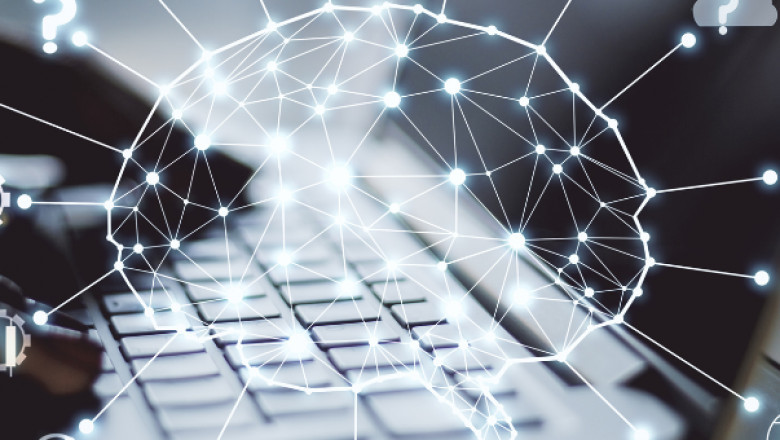views
Introduction
AI is now a crucial part of every digital activity. From creating content to providing responses, AI systems such as ChatGPT have changed the way we work, learn, and interact with one another. There is a rapidly increasing ability of AI to create content, which presents another challenge: determining what content is authored by a human and what is produced by a machine. This is where AI detectors come into play; AI generators and human readers are at an equal battle, and the AI detector tips the scales.
What is a Detector de IA?
A Detector de IA uses machine learning and analysis of language structures to discover features typical of AI writing. They focus on written material to evaluate if text was generated by AI or a human being. An AI detector uses complex algorithms to analyze speech patterns and linguistic traits to determine if the AI or a human wrote a given text.
Such tools help educators to understand whether students’ essays were written by their own intellect. Publishers can also check whether articles were genuinely penned down and not produced programmatically.
AI detectors have wide applications across educational institutions, content development sites, journalism, and any business where content authenticity is of utmost importance.
How do AI detectors work?
AI detectors function around a few main principles. Most tools apply natural language processing (NLP) to examine the flow, rhythm, and even the predictability of text. Here is how they function:
Linguistic Evaluation: AI content generation has obvious signs like repetition of phrases, format adherence, and overly polished sentences. Detectors examine such striking patterns to analyze if content might have been generated.
Perplexity and Burstiness: These are two significant metrics to focus on in AI detection. Perplexity looks at how predictable specific text is and burstiness compares variation in length between sentences. Human writers create paragraphs with higher burstiness and unpredictability than AI-generated content.
Most AI detectors undergo training using vast volumes of human-written texts and AI-generated content–also known as focusing on large data sets. This training enables reasonably accurate differentiation between the two.
Why is AI detection important?
Humans and machines are becoming increasingly harder to distinguish from one another. While AI has its bountiful use-cases, it, however, undeniably poses some ethical and practical problems.
One of the major areas which poses a challenge in the education sector is Academic Integrity. As AI systems become more accessible to students, teachers and professors require methods for verifying the authenticity of submitted content. Reliable AI detectors can assist preserve academic integrity.
Communication with audiences has a human touch. This enables creativity and adds a personal tone to content. There are brands that depend on the overuse of AI. Brand perception can be harmed greatly. Using AI detectors allows marketers to preserve humanity in their business communication.
Every tool comes with its own pros and cons and AI detectors are no different. There are a few restrictions that need to be kept in mind:
AI Detectors are a powerful tool, however no system can offer a guarantee of 100% accuracy.
These restrictions can lead to false negative and positive results being consistently flagged as human written. This is especially true for formal or structured pieces of content.
Growing AI Models: AI-powered language models are improving at an unprecedented rate. As they become increasingly human-like, writing bots becomes harder and harder to keep up with. To remain effective, constant changes and enhancements are required.
Limitations of Languages: Many detectors are tailored to function efficiently in English, which may lead to inaccurate detection if switched to other languages like Spanish, French, or German.
Commonly Used AI Detector Tools
Currently, the market has a plethora of detection tools. Below are some of the most popular ones:
OpenAI Text Classifier: This tool created by the folks at ChatGPT analyzes whether a piece of text was likely generated by AI.
Originality.ai: Widely used by SEO and content marketers, this tool merges plagiarism detection and AI detection.
GPTZero: Becoming the favorite among the academic sphere, GPTZero flags AI-generated content with informational insights into perplexity and burstiness.
Writer.com AI Content Detector: Stated to be designed for marketers and writers, this tool assists in maintaining brand content as authentic and human-sounding.
Ethical Considerations
With the incorporation of AI tools in our day-to-day tasks, the discussion surrounding ethics becomes pivotal. Protecting against AI misuse with detectors is helpful, but teaching users how to use AI responsibly is equally, if not more important. Instead of placing restrictions on AI, we should put forth ethical policies that facilitate its use.
Simultaneously, we must make certain that AI detectors are not used to unwarrantedly accuse or punish people. Every detection should be followed up with a manual assessment and contextual judgment based on review.
Insights
The development of AI offers great possibilities but also new hurdles to overcome. A Detector de IA provides a vital holdup in this ever-increasing digital realm. As a teacher, editor, businessperson, or even the average inquisitive citizen, using AI responsibly with no breaches of integrity is fundamental in a world that is progressively assimilating technology.














Comments
0 comment